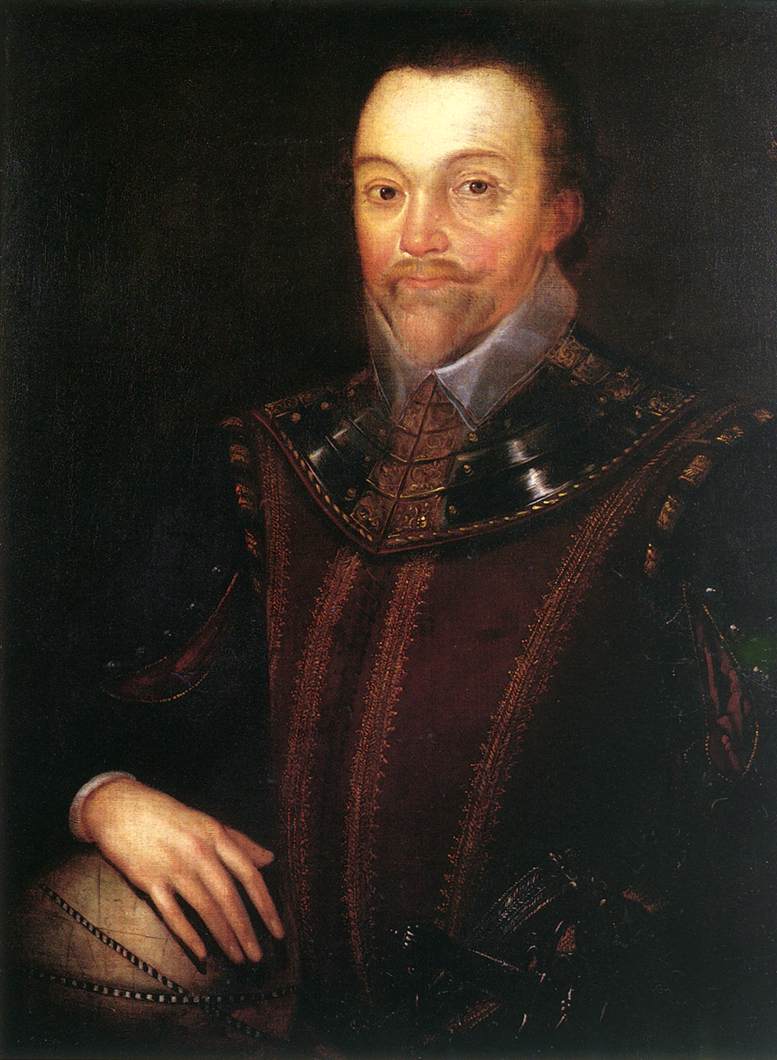After pillaging the once-untouchable Pacific towns and sea lanes of the Spanish, Francis Drake and his fleet led by the Golden Hind continued northward. They had captured cargoes estimated at some 37,000 ducats (~$57,000,000), but they had also cut off their escape. To return to England, the fleet would have to slip by numerous Spanish colonies and ships either rounding the Cape of Magellan or through the South Seas, and then return via friendly Portuguese ports. Instead, Drake decided to continue northward and explore where even the Spanish had not yet reached. Far into uncharted territory, he came upon a bay that reminded his crews of home.
Francis Petty, one of Drake’s gentlemen-at-arms, wrote, “Our General called this country Nova Albion, and that for two causes; the one in respect of the white banks and cliffs, which lie towards the sea, and the other, because it might have some affinity with our country in name, which sometime was so called. There is no part of earth here to be taken up, wherein there is not some probable show of gold or silver.” Petty’s prophecy of gold would come true as bad weather forced Drake and his expedition out of their bay and through the Golden Gate into what would become known as Saint George’s Bay. Facing mutinous sailors who did not wish to continue north, Drake decided to conquer their foul spirits by taking some of them with him on expeditions up various rivers to chart the area. In early July, they would find gold flakes and even pebble-sized nuggets simply sitting in the riverbed.
Upon their return to the bay, Drake began construction of a fort to guard the area and solidify the English claim. The local natives were very amiable; French lawyer and historian Jules Verne wrote, citing Drake’s logs, “They appeared to be greatly astonished, and showed us great respect, thinking we were gods, and they received us with a great deal of reverence.” The Indians gave the Englishmen gifts of feathers and tobacco and always set aside their weapons before approaching. Their women stayed at a distance and scratched themselves to the point of bleeding, which Drake eventually learned was a method of sacrifice. With aid from the Indians, Drake completed Fort Elizabeth and staffed it with some of his most trusted advisors, including Petty.
Drake returned to England amid much aplomb in 1580. While the war with Spain had lulled into peace, his feat of circumnavigating the world gained him a knighthood. He became Mayor of Plymouth as well as a Member of Parliament and used his positions to begin the Albion Company, to which Elizabeth would grant a charter for a colony on the western coast of America. A well funded expedition left in 1584, shortly before the national attention would be shifted toward the Spanish Armada. The war would destroy Sir Walter Raleigh’s attempts at creating an English colony in North America on the eastern coast, which would later be settled by Puritans and planters as well as French, Dutch, Swedes, and Scottish.
England’s real hold on the Americas would turn to west. The West Indies and eastern seaboard remained important economic points for triangular trade in the Atlantic, but thousands of settlers would cross the Pacific for Albion, where gold seemed impossibly plentiful. England (and then Britain in 1707) explored the vast ocean, setting up important trading posts through Oceania and soon colonizing Hawai’i. Albion’s population soared as gold-mining served as a base to numerous industries such as logging, fur trading, and agriculture.
In 1776, the culturally diverse Eastern American Colonies rebelled, and a small movement arose in Albion for independence as well, but fears of Spanish incursion determined that the Albionians would remain British. The remoteness of Albion, however, gave the region its own sense, distinguishing their society from Britons, Americans, or Canadians. Albion eventually clarified its frontier into borders stretching from Spanish Baja in the south to Canadian Yukon and Russian Alaska in the north. When the Mexican-American War handed the bulk of Mexico’s northern territory to the land-hungry Americans, war to maintain independence from Manifest Destiny became inevitable. The Utah War involving Mormon settlers and the American Federal Government spilled over into Albion, and Albionian troops marched in support of Governor Brigham Young. Fears of going to war with Britain eventually brought the war to a diplomatic end with an independent Deseret dividing much of the border between Albion and the United States.
By maintaining neutrality in the American Civil War, Albion would return to good relations with the United States, who began to expand southward into the Caribbean in war with Spain. Albion, meanwhile, gained dominion status and began its own expansion across the Pacific, soon running afoul of the Japanese Empire, who would serve as their major nemesis in World War II.
--
In reality, Francis Drake explored the Pacific Coast of North America, possibly as far north as Canada, but did not settle. Gold was not discovered there until 1848, when James Marshall spotted it near Sutter’s Mill. The resulting gold rush would make California into one of the most important centers of the United States of America.

No comments:
Post a Comment